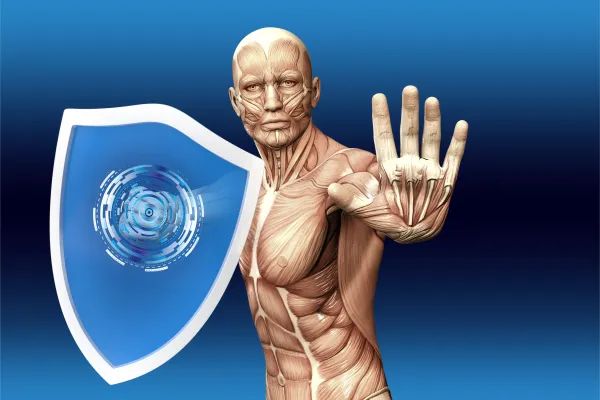Internal Medicine Coding Alert
Use These Tips to Grasp TCM Reporting

One-month embargo lifted on TCM codes.
When your clinician provides follow-up care for a patient discharged from certain acute care and other settings, transitional care management (TCM) codes will be vital for coding the evaluation and management (E/M) of the patient.
Bonus: These codes fetch higher revenue than the E/M codes for the visits included in TCM, compensating for the added efforts your clinician puts in providing care.
Report TCM with one of the following two codes:
- 99495 (Transitional care management services with the following required elements: communication [direct contact, telephone, electronic] with the patient and/or caregiver within 2 business days of discharge; medical decision making of at least » moderate complexity during the service period; face-to-face visit, within 14 calendar days of discharge)
- 99496 (…medical decision making of high complexity during the service period; face-to-face visit, within 7 calendar days of discharge).
Use these following four pointers to guide you through TCM code reporting and ensure claim success each time you report these codes.
Observe 2-Day Post-Discharge Limit
The first step to reporting TCM codes necessitate you to get in touch with the patient in the first two business days after discharge. You should note that business days typically include days from Monday to Friday. You can’t count in any holidays that occur during these days when counting the days from discharge. You must know the ways to get in touch with the patient when reporting TCM codes.
“The guidelines stipulate this quite specifically that this should be in person or over the phone,” says Suzan (Berman) Hauptman, MPM, CPC, CEMC, CEDC, senior principal of ACE Med, a medical auditing, coding and education organization in Pittsburgh, Pa. You can also get in touch with the patient using other means like email. Once you have established contact with the patient, you should make note of it in the patient’s chart. You should try to garner as much information (discharge summary, details of procedures during the hospital stay, details of medication and information regarding follow-up, etc.) from the patient as is possible. You should make note of all these details captured in the patient chart.
Heads up: If you or your clinical staff makes at least two attempts to get in touch with the patient within two business days after discharge, you can still report TCM codes if all the other requirements for reporting these codes are satisfied, even if the initial attempts to connect with the patient are unsuccessful. The failed communication attempts should be documented and emphasizes that you continue efforts to get in touch with the patient until you are successful, according to CMS. In any case, you cannot report TCM codes unless the face-to-face service occurs in the stipulated time after discharge.
Discover Designated Timeframe for Face-to-Face
Once you are in touch with the patient either through electronic means or in person, your clinician should perform a face-to-face service to the patient, failing which you cannot report TCM codes. Based on the code you are reporting, your clinician must perform the face-to-face visit within a stipulated time after the patient has been discharged.
For reporting 99495, your FP should perform the face-to-face service within 14 days of discharge. You report 99496 when your clinician performs the visit within seven days after discharge. Remember, when counting days for performing the face-to-face service, count calendar days and not business days as you would do when you’re trying to establish contact with the patient.
“Also, note that additional face-to-face E/M services provided on subsequent dates after the first face-to-face visit may be reported separately,” says Kent Moore, senior strategist for physician payment at the American Academy of Family Physicians.
Even though the TCM codes only mentiona ‘face-to-face’ visit, certain non-face-to-face services are also included into the service component of these codes. Some of the non-face-to-face time might be spent by your clinician in obtaining and reviewing discharge information; assessing whether the patient needs follow-up tests or treatments; interacting with health professionals who will be involved with the patient’s care; educating the patient or family members; handling arrangements for help from community resources; or helping schedule required follow-ups with community providers and services.
Note that the TCM codes also include certain non-face-to-face services provided by your clinical staff, under the direction of the physician or other qualified health care professional. According to CPT®, these may include:
- Communication (with patient, family members, guardian or caretaker, surrogate decision makers, and/or other professionals) regarding aspects of care,
- Communication with home health agencies and other community services utilized by the patient,
- Patient and/or family/caretaker education to support self-management, independent living, and activities of daily living,
- Assessment and support for treatment regimen adherence and medication management,
- Identification of available community and health resources,
- Facilitating access to care and services needed by the patient and/or family.
When performing the face-to-face visit, your clinician might communicate with the patient or decision makers about the transition; educate the patient or family members on self-care, independent living, or other pertinent areas; assess medications; identify community or health resources that could benefit the patient; or help coordinate the patient’s access to care and services.
Submit TCM Claims ASAP
When your clinician performs the face-to-face visit for the patient, you need not wait for the entire 30 days from discharge to complete for submission of claims. You report the TCM codes right after your clinician completes the face-to-face visit for the patient.
Originally, the Centers for Medicare & Medicaid Services (CMS) required you to wait for the 30-day period following discharge to complete to place your Medicare claims. Also, the date of service (DOS) had to be on the date when the 30-day period was complete. But, now, CMS allows you to report the TCM code immediately after the service and report DOS as the date the face-to-face visit occurred. “In any case, the place of service reported on the claim should correspond to the place of service of the required face-to-face visit,” notes Moore.
If the patient is readmitted, you can still report the TCM codes if your clinician performed the service within the 30-day period, including the time following second discharge. However, if you have not claimed for the TCM codes during the first discharge, then you can use the 30-day window after the second discharge to report the TCM codes, provided your clinician performed the service within the stipulated timeframe and as long as no other provider bills the service for the first discharge.
Caveat: If the patient dies within the 30-day window following discharge, then you cannot report the TCM codes for the management of the patient. Instead, you will have to report the face-to-face visit that occurred with the most appropriate E/M code.
Understand TCM Reporting Guidelines
When reporting TCM codes, 99495 and 99496, keep in mind that you can only report the code once per patient during the 30-day window following discharge. “TCM can only be done by one physician as per the guidelines,” Hauptman says. If more than one of your physicians saw the patient for a face-to-face visit to evaluate the patient, you will be able to claim the TCM code only for the first physician who saw the patient face-to-face.
For the services rendered by the other physician(s), you will not be able to report TCM codes. Instead, you report the face-to-face service provided by the other physician(s) with the most appropriate established E/M code for the visit.
Resources: For more information on reporting TCM codes, check this link at https://www.cms.gov/medicare/medicare-fee-for-service-payment/physicianfeesched/downloads/faq-tcms.pdf.
Related Articles
Internal Medicine Coding Alert
- MACRA:
Check Out These Pros, Cons of Early MIPS Adoption
‘Pick your pace’ options available for 2017. If you have been thinking about the Medicare [...] - E/M Coding:
Use These Tips to Grasp TCM Reporting
One-month embargo lifted on TCM codes. When your clinician provides follow-up care for a patient [...] - CPT® Coding:
Nail Debridement or Biopsy? These Clues Lead the Way
Remember, you might also report both procedures together. When your provider debrides or excises a [...] - You Be the Coder:
Additional Aerosol Treatments Deserve Separate Pay? Find Out
Question: If our physician performed nebulizer treatment to help control wheezing symptoms in a patient and [...] - Reader Question:
Look Toward J Code for Wheezing Dx
Question: I am new to coding. Our clinician recently came up with the diagnosis of ‘wheezing.’ [...]




